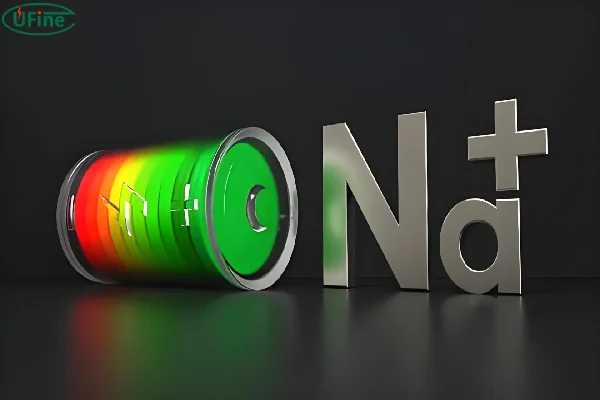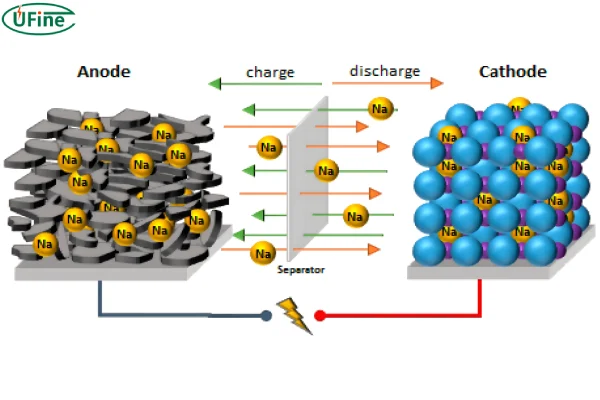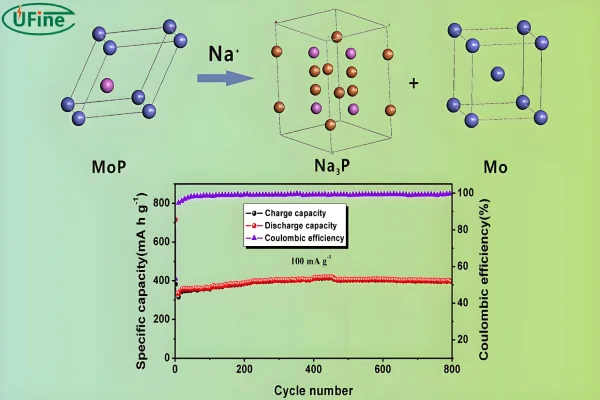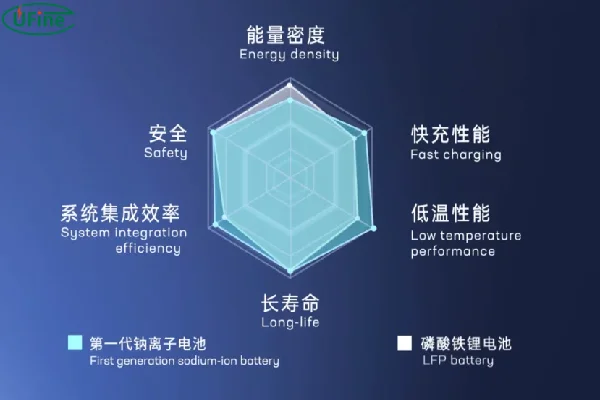In today’s rapidly evolving energy landscape, sodium-ion batteries are emerging as a compelling alternative to the widely used lithium-ion batteries. With their potential for lower costs, enhanced safety, and sustainable sourcing, sodium-ion batteries could play a transformative role in energy storage. This article provides a comprehensive overview of sodium-ion batteries, exploring their history, technology, pros and cons, applications, pricing, and future potential.

Part 1. What is a sodium-ion battery?
A sodium-ion battery is a type of rechargeable battery that utilizes sodium ions (Na⁺) as the primary charge carriers. These batteries share a similar operating principle with lithium-ion batteries but use sodium, which is more plentiful and less expensive than lithium. Sodium-ion batteries are gaining traction due to their potential to offer cost-effective and sustainable energy storage solutions, particularly in applications where high energy density is not the primary requirement.
Part 2. Sodium-ion battery history
The journey of sodium-ion batteries began in the 1970s when researchers started exploring alternatives to lithium-ion technology. Early sodium-ion batteries faced significant challenges, such as low energy density and poor cycle life.
However, advancements in materials science and battery technology over the past few decades have revitalized interest in sodium-ion batteries. Notable milestones include developing more stable anode and cathode materials, improved electrolytes, and enhanced battery designs that address previous limitations. Today, sodium-ion batteries are considered a promising candidate for various energy storage applications, driven by the need for more sustainable and cost-effective solutions.
Part 3. Sodium battery technology
Sodium Battery Structure
A sodium-ion battery consists of three main components: the anode, cathode, and electrolyte.
- Anode: The anode is typically made of hard carbon materials, which provide a stable structure for sodium ions to intercalate during charging. Researchers are also exploring alternative materials like tin and phosphorus to improve performance.
- Cathode: The cathode can be composed of various materials, including layered oxides (such as NaₓCoO₂ or NaₓMnO₂) and polyanionic compounds (such as Na₃V₂(PO₄)₃). These materials are chosen for their ability to reversibly host sodium ions.
- Electrolyte: The electrolyte is a sodium salt (e.g., NaPF₆) dissolved in a solvent, which allows sodium ions to move between the anode and cathode during the charge and discharge cycles.
Sodium Battery Principle
The operation of a sodium-ion battery involves the movement of sodium ions between the anode and cathode through the electrolyte. During charging, an external electrical current forces sodium ions to leave the cathode and migrate to the anode, where they are stored. Simultaneously, electrons travel through the external circuit to balance the charge.
During discharging, the process is reversed: sodium ions move back to the cathode, and the stored electrons flow through the external circuit, providing electrical power to connected devices. This reversible ion exchange enables the battery to store and release energy efficiently.
Part 4. Advantages and disadvantages of sodium-ion battery
Pros
- Abundance and Low Cost: Sodium is one of the most abundant elements on Earth, significantly reducing raw material costs compared to lithium. This makes sodium-ion batteries potentially cheaper to produce.
- Safety: Sodium-ion batteries are less prone to thermal runaway and overheating, which enhances their safety profile, particularly in large-scale applications.
- Environmental Impact: Sodium-ion batteries are more environmentally friendly, as sodium extraction has a lower environmental impact than lithium mining. Additionally, they are easier to recycle.
- Performance at Low Temperatures: Sodium-ion batteries tend to perform better at lower temperatures compared to lithium-ion batteries, making them suitable for applications in colder climates.
Cons
- Lower Energy Density: Sodium-ion batteries typically have a lower energy density than lithium-ion batteries, meaning they store less energy per unit of weight. This can limit their use in applications where size and weight are critical, such as portable electronics and high-performance electric vehicles.
- Heavier and Bulkier: The larger ionic radius of sodium than lithium results in heavier and bulkier batteries, which can be a drawback for certain applications.
- Limited Commercial Availability: Despite significant advancements, sodium-ion batteries are still in the development phase and are not yet widely available on the commercial market. Scaling up production remains a challenge.
Part 5. Applications
Sodium-ion batteries hold promise for various applications, particularly where cost and safety are prioritized over energy density:
- Grid Storage: Due to their lower cost and enhanced safety, sodium-ion batteries are ideal for large-scale energy storage systems. They can store excess energy generated from renewable sources like solar and wind and release it when needed, helping to stabilize the power grid.
- Electric Vehicles (EVs): While limited by lower energy density, sodium-ion batteries could become more viable for electric vehicles as technology advances. They offer a safer and potentially cheaper alternative to lithium-ion batteries, particularly for low-range EVs.
- Consumer Electronics: As the technology matures, sodium-ion batteries could be used in low-power consumer electronics, such as remote controls, flashlights, and backup power supplies, where their weight and size disadvantages are less critical.
- Industrial Applications: Sodium-ion batteries can be used in various industrial applications, including power tools, uninterruptible power supplies (UPS), and equipment that requires reliable energy storage under varying temperature conditions.
Part 6. Sodium-ion battery price
The cost of sodium-ion batteries is generally lower than that of lithium-ion batteries, primarily due to the abundance and lower cost of sodium compared to lithium. This makes sodium-ion batteries an attractive option for applications where cost is a significant factor.
However, as sodium-ion technology is still relatively new and not yet mass-produced, prices can vary. As research continues and production scales up, the cost will decrease further, making sodium-ion batteries even more competitive.
Part 7. Will sodium-ion battery replace lithium-ion battery?
The question of whether sodium-ion batteries will replace lithium-ion batteries is complex. Sodium-ion batteries offer significant advantages in terms of cost, safety, and environmental impact. However, their lower energy density means that they may not be suitable for all applications.
1. Reasons for Replacement
- Cost-Effectiveness: Sodium-ion batteries are cheaper to produce due to the abundance of sodium, making them an attractive option for cost-sensitive applications.
- Safety: Enhanced safety features make sodium-ion batteries suitable for applications where thermal stability is crucial.
- Sustainability: More environmentally friendly production and easier recycling processes align with the growing demand for sustainable technologies.
2. Limitations
- Energy Density: The lower energy density of sodium-ion batteries means that they are less suitable for high-energy applications, such as smartphones and high-performance electric vehicles.
- Commercialization: The technology is still in the development phase, and widespread commercial availability is limited. Overcoming production and scalability challenges will be crucial for broader adoption.
In summary, sodium-ion batteries are likely to complement rather than completely replace lithium-ion batteries. They may find their niche in applications where cost and safety are more critical than energy density.
Part 8. Future of sodium battery: opportunities and challenges
Opportunities
- Research and Development: Continued advancements in materials science and battery technology are expected to improve the performance and energy density of sodium-ion batteries. Innovations in electrode materials and electrolytes could lead to more efficient and durable batteries.
- Sustainability: As the global demand for sustainable energy solutions grows, sodium-ion batteries could play a key role in reducing the environmental impact of energy storage systems. Their lower environmental footprint and recyclability make them an attractive option.
- Market Expansion: There is significant potential for sodium-ion batteries to expand into new markets, particularly in regions where cost and safety are major concerns. Applications in grid storage, lower-range EVs, and industrial sectors are promising areas for growth.
Challenges
- Energy Density: Improving the energy density of sodium-ion batteries remains a significant challenge. Research is focused on developing new materials and designs that can enhance energy storage capacity.
- Commercialization and Production: Scaling up production to meet commercial demand while maintaining quality and performance is a major hurdle. Establishing reliable supply chains and manufacturing processes will be critical.
- Competition: Sodium-ion batteries will need to compete with the well-established lithium-ion battery market. Demonstrating clear advantages in specific applications will be essential for gaining market share.
In conclusion, sodium-ion batteries offer a promising alternative to lithium-ion batteries, with significant advantages in cost, safety, and environmental impact. While they may not replace lithium-ion batteries entirely, they are poised to play a crucial role in the future of energy storage. As research and development continue to address current limitations, sodium-ion batteries could become a key component of sustainable and cost-effective energy solutions.
Related Tags:
More Articles

LiPo Battery Discharge Rate Guide & Calculation Tips
Understand LiPo battery discharge rates, C-ratings, and how to calculate max current. Essential guide for RC, drones, and electronics users.
High‑Capacity 3S LiPo Batteries: 5000 mAh vs. 10000 mAh
Compare 3S LiPo 5000mAh vs 10000mAh batteries by weight, power, and use. Find the best fit for your drone, RC car, or boat setup.
Top 5 Applications for Small 3S LiPo Batteries
Small 3S LiPo batteries power drones, RC gear, wearables, and robotics with high energy and low weight. Making them ideal for compact electronics projects.
Building and Charging Your Own 3S LiPo Pack: A Step‑by‑Step Guide
Learn how to build, balance, and charge a 3S LiPo battery pack safely at home with this complete DIY guide for hobbyists and beginners.
How to Choose the Right LiPo Battery Plug Type?
Discover the best LiPo battery plug types, how to choose them, and expert tips for safe usage, soldering, and maintenance.






